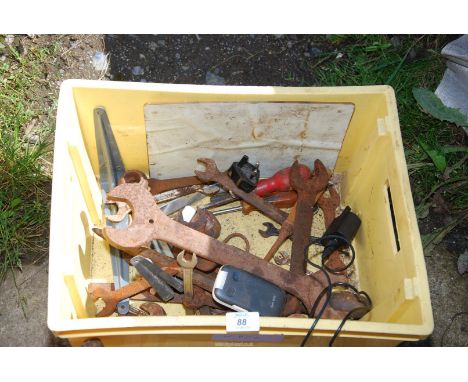We found 82067 price guide item(s) matching your search
There are 82067 lots that match your search criteria. Subscribe now to get instant access to the full price guide service.
Click here to subscribe- List
- Grid
-
82067 item(s)/page
[Hemsterhuis (Frans)] Alexis ou l'age d'or, first edition, engraved folding diagram at end, occasional spotting or light foxing, lightly browned, contemporary green calf ?by Thomas van Os (we note similar foliage tools on a red morocco binding by him for another copy of the same work), gilt, covers with outer single filet border, within which an undulating foliage border, flat spine in compartments, lacking label, spine faded, corners worn, rubbed and scuffed, 8vo (binding 173 x 109mm.), Riga, Johann Friedrich Hartknoch, 1787.⁂ Here Hemsterhuis presents for the first time his concept of a golden age, which was embraced by the Sturm und Drang and Romantic movements.
Aster / Fulgurex Gauge 1 4-6-0 Loco and Tender Great Western green King Class "King William IV" No.6002, Live Steam. Loco with 2 internal and 2 external cylinders finished in Great Western lined green with usual cab details include a Aster Pressure Gauge and other details, has been used on a number of occasions, would benefit from a light clean there is a homemade coal section to the top of the tender, also includes a small amount of accessories including some tools, guild plates King George V nameplate and number, touch-up paint, bell and gloves. Overall Good Plus to Excellent in non-original box.
A rare and well-documented ‘Easter Rising’ 1916 D.C.M. group of four awarded to Company Sergeant Major S. H. Lomas, 2nd/6th Battalion, Sherwood Foresters (Nottinghamshire and Derbyshire Regiment), for his gallantry in building and maintaining a barricade under intense sniper fire in the vicinity of Moore Street and Parnell Street, Dublin, during the height of the uprising, and whose diary for the period provides an important eyewitness account of Easter Week; subsequently proceeding to France, he was killed in action during the Battalion’s assault at Hargicourt on 27 April 1917 Distinguished Conduct Medal, G.V.R. (3415 C.S. Mjr: S. H. Lomas. 2/6 N. & D.R. -T.F.); Queen’s South Africa 1899-1902, 5 clasps, Cape Colony, Orange Free State, Transvaal, South Africa 1901, South Africa 1902, unofficial fixings between state and date clasps (7495 Pte. S. H. Lomas. Vol: Coy. Derby: Regt.); British War and Victory Medals (141062 W.O. Cl.2 S. H. Lomas. Notts. & Derby. R.) light scratch to obverse field of DCM; edge bruise to QSA; otherwise good very fine and better (4) £5,000-£7,000 --- D.C.M. London Gazette 24 January 1917; citation published 3 March 1917: ‘For conspicuous gallantry and devotion to duty. He erected barricades under very heavy fire and set a splendid example throughout.’ The recipient’s own diary for the week of the Easter Rising gives further details: 24 April 1916: 8:30 p.m. Whilst at Watford we received order to prepare for a sudden move. By midnight all packed and ready to move. 25 April 1916: 5:00 a.m. Battalion paraded and marched to Watford Junction Station. Arrived at Liverpool Dockside Station at 2:10 p.m. and boarded the Royal Mail Steamer Ulster for Kingstown. 26 April 1916: 1:00 a.m. Battalion moved off in the direction of Dublin.... We arrived at the Royal Hospital, Dublin, at 7:50 p.m. After unloading our rifles we were allowed to take up our quarters for the night in the corridors, thoroughly tired out. 27 April 1916: Noon. Marched out from the Royal Hospital en route for Dublin Castle. All along the road, constant sniping was going on but the Royal Irish, by keeping up a constant fire in the direction of the snipers, prevented them from concentrating their fire on the column. We arrived at Dublin Castle without any casualties. 6:00 p.m. ‘D’ Coy were ordered to proceed along Cappel Street, Parnell Street to consolidate the position held by the Royal Irish. We moved out and on crossing the bridge over the river from Parliament Street, we came under heavy fire from the Sein Feinners. We proceeded up Cappel Street and on entering Parnell Street, at every cross street we were subjected to rifle fire from the enemy. On arrival at Moore Street, I was instructed to make a barricade right across the street. 7:30 p.m. Proceeded to make the barricade assisted by 12 men. To find material for this, the furniture of a butcher’s shop was used consisting of blocks, bedding, stands, wardrobes, spring mattresses etc. This barricade was completed by 11:00 p.m. and three sentries were posted. We were then instructed to make safe all the barricades of "D" Coy consisting of seven at the various streets, viz :-Street, Kings Inn Lane, Coles Lane, Denmark Chapel Lane and two streets the names of which I did not take. When this was completed we got over the barricades and fixed three lots of trip wires, to hold up the enemy in case of a rush. During the whole of the time incessant firing was being carried on by both sides. Whilst the barricade at the end of Moore Street was being erected, a picked squad of Royal Irish held positions on house roofs and in top storey windows, effectually preventing an attack. 28 April 1916: 2:00 a.m. The work being made as safe as possible, I found an armchair used for the barricading, and so slept peacefully. 5:30 a.m. Relief guards sent on duty, barricades further strengthened, additional men allotted and breakfast given out. 9:30 a.m. An 18-pounder was brought up. A fatigue party was then taken to remove the setts to provide a place for the shovel of the gun. This was at the corner of Coles Lane. Four shells were fired down the street into a large shop at the bottom in Henry Street, in which the Sein Feinners were making explosives, Messrs Curtiss & Sons, Brass Foundry and Munitions Factory. This must have upset their calculations somewhat, as the firing from that direction almost ceased. The plate glass windows in the locality were shattered by the explosion of the charge, and the shell cut through the factory like a knife. Noon. One 18-pounder arrived and laid facing down Moore Street in the direction of the G.P.O. Four shells were fired which caused the rebels to quake, as for some considerable time, the rifle fire was silent, with the exception of a few snipers. 6:00 p.m. Sniping became more incessant until dark. All extra men were mounted and posted. 29 April 1916: 9:00 a.m. Received instructions to prepare for storming parties of 20 men and an officer, and to provide ourselves with tools of any description to break down the doors etc. To search the houses through to Henry Street and to make a breach when necessary in the walls. 12:30 p.m. All ready and the assault commenced. My party were allotted to an alley with houses either side. My weapon was a bar 5’6” long 1” strength with a lever end – a beautiful tool for the purpose. I struck at one door such a smack and knocked the door complete for some 5 yards into the house, breaking hinges and lock at the same time. Sweating like the devil! (Rather with fear, excitement or work) It is surprising how the lust to destroy comes over you. 2:00 p.m. Orders are passed for us to stand by as a white flag was approaching the end of Moore Street. This was found to be from Sean O’Connelly [James Connolly] asking for terms of surrender. Instructions were sent back up the street for O’Connelly to come down and interview the General in command of our troops. This was done, O’Connelly being carried down on a stretcher, as he was wounded in the leg. Whilst standing by, we came across the dead body of O’Reilly [the O’Rahilly], the acting adjutant. 7:00 p.m. The whole lot of the rebels decided to surrender and to see them troop out of the house in Moore Street between three and four hundred of them. The several storming parties were ordered to stand by just in time, as the next house we were about to enter from the back, 36 Sein Feinners came out of the front. Part of these men were marched up to the Rotunda and there searched, and part we searched. 100 men of one Battalion were the escort. The whole of the rebels were corralled on the green for the night at the Rotunda Hospital under a strong guard.’ A full transcript of the recipient’s Diary, including explanatory footnotes regarding the street names (many of which no longer exist or have been renamed) is published in ‘The 1916 Diaries’, by Mick O’Farrell, a copy of which book is included with the lot. Samuel Henry Lomas was born in Tideswell, Derbyshire, and attested there for the Derbyshire Regiment on 3 March 1900, having previously served with the Regiment’s 2nd Volunteer Battalion. He served with the 1st Battalion in South Africa during the Boer War from 16 March 1901 to 26 May 1902, and was discharged on 27 May 1902, after 2 years and 86 days’ service. Reverting to the Volunteers, Lomas then re-enlisted in the Sherwood Foresters (Nottinghamshire and Derbyshire Regiment) at Chesterfield on 31 October 1914, and was posted to the 2nd/6th (Reserve) Battalion. Promoted Company Sergeant Major and appointed Warrant Officer Class II on 13 March 1915, he served at home, and in Apr...
A QUANTITY OF UNBOXED AND ASSORTED OO GAUGE MODEL RAILWAY ACCESSORIES AND TRACK ETC., assorted buildings by Airfix (constructed kits), small accessories and figures by Hornby Dublo, Merit and others, Britains Trees, scenic accessories, small quantity of boxed Hornby and Peco track, unboxed H & M Clipper Power Controller, quantity of assorted tools, including vintage Black & Decker electric drill (no plug), paints, brushes, clamps etc. (4 boxes)
A LARGE QUANTITY OF BOXED AND UNBOXED OO AND HO GAUGE MODEL RAILWAY LINESIDE BUILDINGS, ACCESSORIES AND TRACK ETC., to include a boxed Hornby operating turntable, No.R408, with an incomplete unboxed example, assorted Tri-ang, Hornby lineside buildings, accessories, vehicles , scenic accessories, large quantity of assorted unboxed Tri-ang, Hornby and Peco track, unbuilt Airfix kits (not checked), tools, paint, wiring, switches, electrical items, quantity of various transformers and controllers, including H & M Clipper and H & M Flyer, assorted catalogues and other literature, collection of Ian Allan Locomotives Illustrated magazines (mainly early issues from No.1), quantity of Naval books, The New Book of Knowledge Vol's.1 - 10 etc., all in playworn condition, some items with damage and wear (14 boxes and loose)
Vintage fishing reel and other fishing accessories, three football rosettes for Everton, West Ham and England, a boxed set of Flyrite darts, assorted vintage calipers, compasses and other tools, a silver-plated hip flask, the Western 'Mounty' stamp album, assorted 7" vinyl records and other items
Set of three Art Deco oak and white metal mounted two-handled rectangular trays, in sizes, a simulated tortoiseshell hand mirror from a dressing table set, an oak rectangular box marked for Geo Pratt & Co, Tailors, Stretton, a pair of Parisian binoculars in case, a small box marked for John Batt & Co London, once containing Hohe-Huette (German) steel tools, an early 20th century mohair teddy and other items
-
82067 item(s)/page



![[Hemsterhuis (Frans)] Alexis ou l'age d'or, first edition, engraved folding diagram at end, occasional spotting or light foxi](https://cdn.globalauctionplatform.com/a0d37812-71cd-45c7-99f0-b03f00ef5472/def4f3b9-7761-499d-8ad0-b03f00f4df21/468x382.jpg)
























































